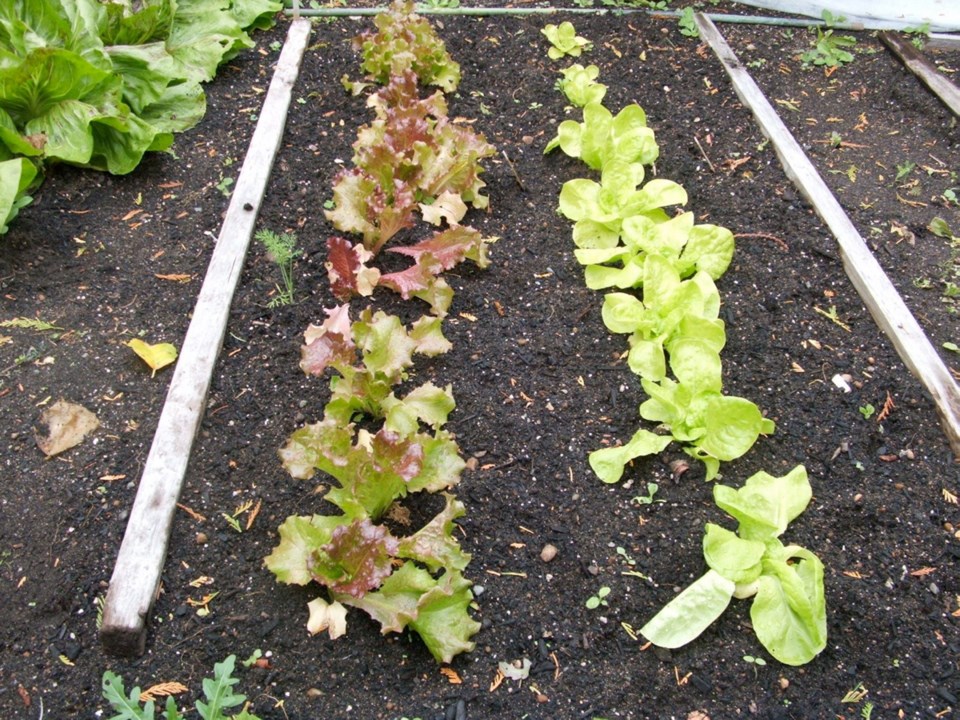"Early in March, when we had garden soil delivered, I told my friends we were about to grow our victory garden. Little did we know how true that would be."
Ruth, writing this from Cassidy, refers to the current rush to grow food that echoes the victory gardens of the Second World War, when people who had never before grown anything edible planted vegetables wherever they could.
For anyone venturing into growing food for the first time, here are some tips on getting started and seeing a season through:
Site
First, look for a sunny location free of root competition from trees and large shrubs. Almost all vegetables need at least six hours of sun daily to produce strong plants and flavourful food. Make sure the site will be easy to water.
No free space? Consider cutting a bed out of a lawn and lifting off the turf. Look for spots in the ornamental garden where small vegetable plants could be tucked in.
No garden? All but the largest plants can be grown in containers.
Choices
Make a list of vegetables you most like to eat. Every person in a family gets to place preferences on the list.
Next, narrow the list to a limited number of best-loved foods that are easy to grow. This is your first vegetable garden. Keep it simple. Beans, carrots, lettuce, spinach and kale are among the least-demanding vegetables.
Plans and placements
If you choose to grow some tall vegetables such as corn and staked tomatoes, locate the tallest at the northern edge of the plot, for the sake of neatness and to minimize shading of smaller, adjacent plants.
Use of space
Tall and vining plants grown upward, against sturdy netting or wire fencing, take up only root room. Growing cucumbers, runner and pole beans, peas and staking tomatoes this way also provides space for small, fast-growing plants, such as most leafy greens, to be grown along the vine bases on both sides. I routinely transplant lettuce along the bases of pea vines and under tall tomato plants.
Planting small vegetables such as carrots and beets in closely spaced blocks rather than in single, well-separated rows, saves considerable room.
Soil
Here’s the heart of the matter. Along with adequate sunlight and moisture, a fertile, humus-rich, moisture-retentive soil that drains efficiently of excess moisture is what will produce robust growth and full-flavoured vegetables.
Seeding and transplanting take mere moments. It’s the soil preparation that requires the most time and labour. New ground needs to be dug over to loosen the soil and uncover rocks and debris for removal. Most soils will need a dusting of lime, except where potatoes and strawberries will grow. Mix in a minimum five-centimetre layer of a nourishing compost, purchased or home-made.
Timing, care
Almost all vegetables can be seeded or transplanted now. Wait until the warmth of May to transplant heat-hungry plants such as tomatoes, cucumbers, squash and melons. Mark plantings with a label, and pull weeds as they appear.
Containers
Assemble containers for growing small and mid-sized favourites. Compact “patio”-type tomatoes, bush cucumbers and zucchini, salad greens, basil and other select plants can make a delightful deck, balcony or patio food garden. Match container size to plant size. To grow and produce well, a zucchini bush needs a container about 40 centimetres wide.
Water
Beans and root vegetables are fairly water-thrifty. Edibles that are mostly water themselves, such as lettuce, cucumbers and tomatoes, need more moisture. Water at ground level if possible, preferably early in the morning.
Harvest
Pick produce at its peak — tomatoes within five days of turning red; beans, zucchini and cucumbers while young, to keep the plants producing more.
Flowers and flavourings
Patches of cheery blooms brighten a vegetable garden. Nasturtiums, calendula and marigolds are easy, colourful flowers. Fragrant alyssum is one of the best for nurturing beneficial insects. Thyme perks up many vegetable dishes. Plant it at one or two plot corners, or in a container.
Supplies
Check ahead on a garden centre’s hours and terms of business before going to pick up seeds, transplants and other supplies. Most centres have websites with the information. They all have specific protocols for protecting the health of customers and staff.
Garden Notice
Sweet potatoes. Dinter Nursery in Duncan is taking orders for sweet potato plants to be picked up at the nursery around mid-May. Varieties available will be Kaukura, Manihi, Tahiti and Tatakoto. Entering any of the variety names together with “sweet potato” into a search engine will lead to full descriptions and photos. The plants will be sold in 10-centimetre pots at $3.29 each. Orders are accepted by email: [email protected].



